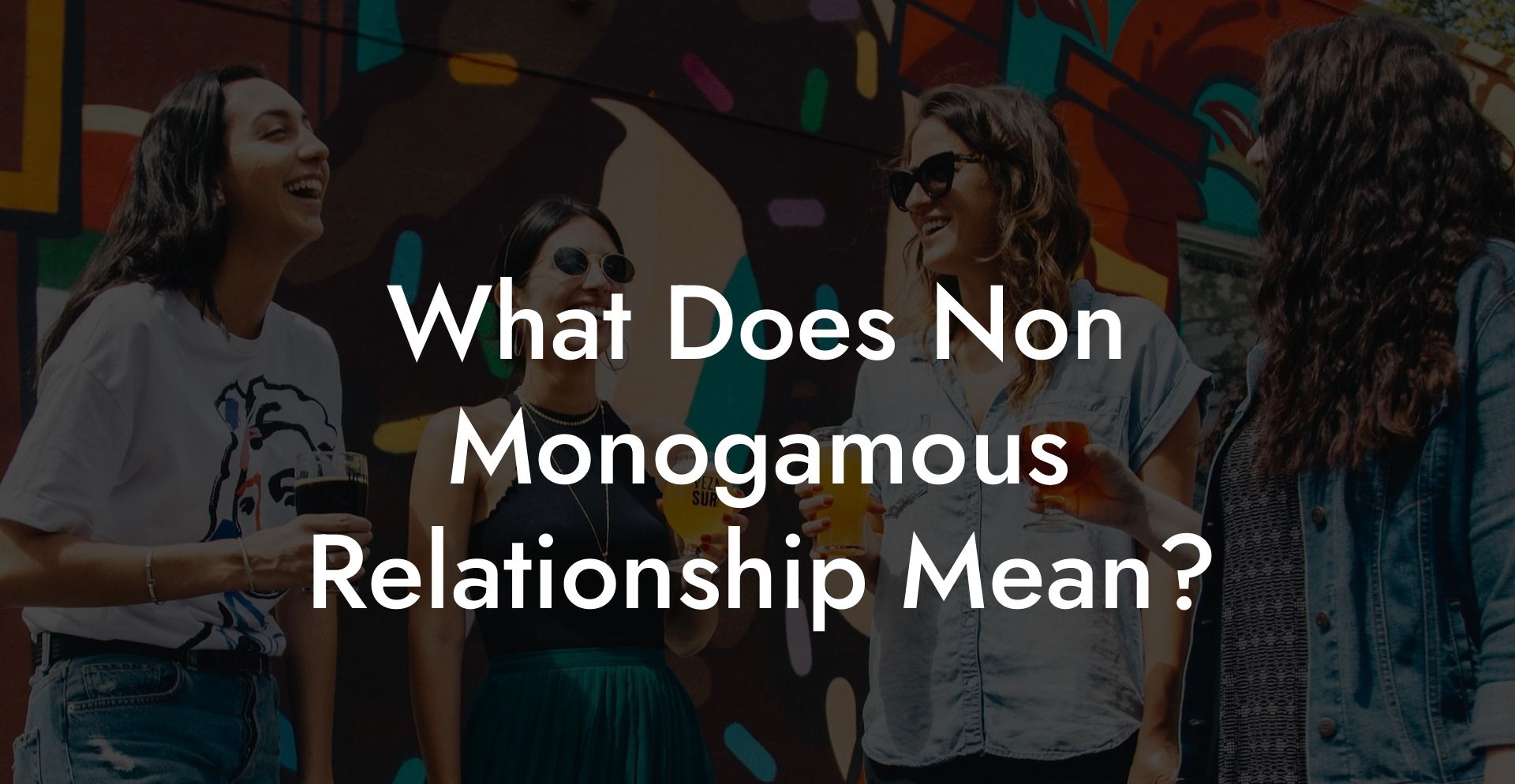Are you curious about the concept of non-monogamy and what it entails? You've come to the right place! As our society evolves and different types of relationship structures are embraced, it is essential to understand the unique aspects of various dynamics, including non-monogamous relationships. In this comprehensive guide, we will delve into the meaning of non-monogamy, its different forms, and how to navigate the challenges inherent in such arrangements. So, sit back, relax, and let's embark on this exciting journey of exploration!
What Does Non Monogamous Relationship Mean Table of Contents
Non-monogamous relationships are those wherein both (or all) parties involved have agreed to engage in romantic or sexual relationships with other people outside of their primary partnership. This is in contrast to monogamous relationships, where partners commit to exclusivity with one another. Non-monogamy does not denote a one-size-fits-all approach to love or sex; instead, it accommodates a multitude of unique relationship styles, preferences, and boundaries.
The different types of non-monogamous relationships include:
Open Relationship
An open relationship is when two partners consent to engage in extra-dyadic sexual encounters while maintaining their emotional bond. Here, emotional fidelity is expected, whereas sexual exclusivity is not.
Swinging
Swinging involves committed partners exploring sexual experiences with others, commonly in the context of clubs or events organized for that purpose. Swingers typically engage in these encounters together, maintaining a strong emotional bond with one another and keeping their experiences purely sexual.
Polyamory
This term, coined from the Greek word "poly" (many) and the Latin word "amor" (love), refers to engaging in multiple loving, committed relationships simultaneously with the knowledge and consent of all partners involved. Each relationship in a polyamorous arrangement may differ in terms of depth, intimacy, and time commitment, but the focus is on forming meaningful emotional connections.
Relationship Anarchy
A subcategory within non-monogamy, relationship anarchy refers to a radical approach where individuals have the utmost autonomy to form connections that do not adhere to societal norms or expectations. Participants in relationship anarchy prioritize personal freedom and flexibility, often finding both emotional and sexual connections with multiple people while refusing to place labels on those connections.
Non Monogamous Relationship Example
Meet Sarah, James, and Tom. Sarah and James are in a committed relationship but have consented to involve Tom as a secondary partner to satisfy their emotional or sexual desires. This arrangement can take different forms: for instance, Sarah and Tom may seek sexual encounters outside their primary partnership, or Sarah and James may engage in swinging activities with other couples. There are no defined rules, but rather, the understanding and respect for the boundaries agreed upon by all involved.
Now that you have a basic understanding of non-monogamous relationships, it's essential to remember that engaging in such arrangements requires open communication, honesty, and trust among all parties involved. As with any relationship style, what works for some may not be suitable for others, but exploring and understanding the myriad of possibilities can help individuals make informed decisions about their love lives.
We hope you found this guide enlightening and insightful. If you did, please don't hesitate to share it with your friends and explore other informative and exciting guides on The Monogamy Experiment. Here's to unearthing more relationship dynamics that make this world a colorful place!













